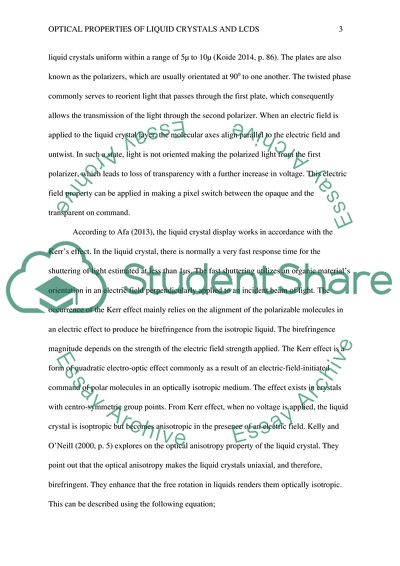Cite this document
(“Optical Properties of Liquid Crystals and LCD Displays Research Paper”, n.d.)
Optical Properties of Liquid Crystals and LCD Displays Research Paper. Retrieved from https://studentshare.org/chemistry/1874682-optical-properties-of-liquid-crystals-and-lcd-displays
Optical Properties of Liquid Crystals and LCD Displays Research Paper. Retrieved from https://studentshare.org/chemistry/1874682-optical-properties-of-liquid-crystals-and-lcd-displays
(Optical Properties of Liquid Crystals and LCD Displays Research Paper)
Optical Properties of Liquid Crystals and LCD Displays Research Paper. https://studentshare.org/chemistry/1874682-optical-properties-of-liquid-crystals-and-lcd-displays.
Optical Properties of Liquid Crystals and LCD Displays Research Paper. https://studentshare.org/chemistry/1874682-optical-properties-of-liquid-crystals-and-lcd-displays.
“Optical Properties of Liquid Crystals and LCD Displays Research Paper”, n.d. https://studentshare.org/chemistry/1874682-optical-properties-of-liquid-crystals-and-lcd-displays.


